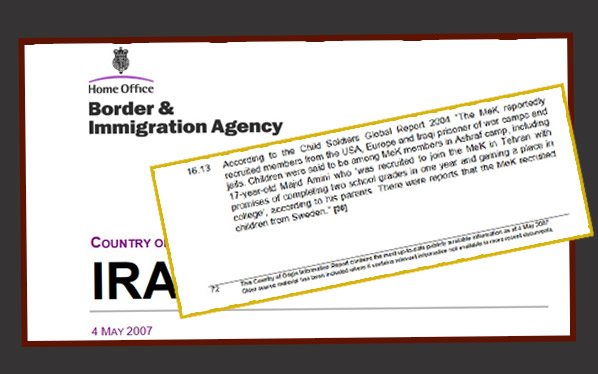Recent testimonies of former child soldiers of the Mujahedin Khalq (MEK) in western newspapers and eventually in the social media, brought the case of MEK’s child soldiers to light. However, recruiting child soldiers has been a longstanding tactic in half a century history of the group. The fact was partly documented by the Home Office of the United Kingdom, in 2007.
Even before its militarization and the foundation of the group’s so-called National Liberation army, aka Saddam’s Private army in Iraq, the MEK leaders were never overly concerned with the age of their followers. Before the 1979 revolution, when the MEK conducted an underground struggle against the shah’s regime, many of its members were teenage girls and boys that had been drawn to a “modern Islam” as articulated by the organization. This Islam was a reinterpretation of the religion in mostly Marxist terms. Many of these under-18 believers were dispatched to fight against the Islamic Republic. An unknown number of them were killed.
During the late 1990s, child soldiers of the NLA were recruited from Europe and North America where they had been smuggled to in 1991 under the order of Massoud Rajavi.

In the chapter about the Mujahedin Khalq as an Iranian opposition group, the British report on Iran published by Border and Immigration Agency of the Home Office, on May 4th, 2007 reads:
“According to the Child Soldiers Global Report 2004 “The MeK reportedly recruited members from the USA, Europe and Iraqi prisoner of war camps and jails. Children were said to be among MeK members in Ashraf camp, including 17-year-old Majid Amini who ‘was recruited to join the MeK in Tehran with promises of completing two school grades in one year and gaining a place in college’, according to his parents. There were reports that the MeK recruited children from Sweden.”

